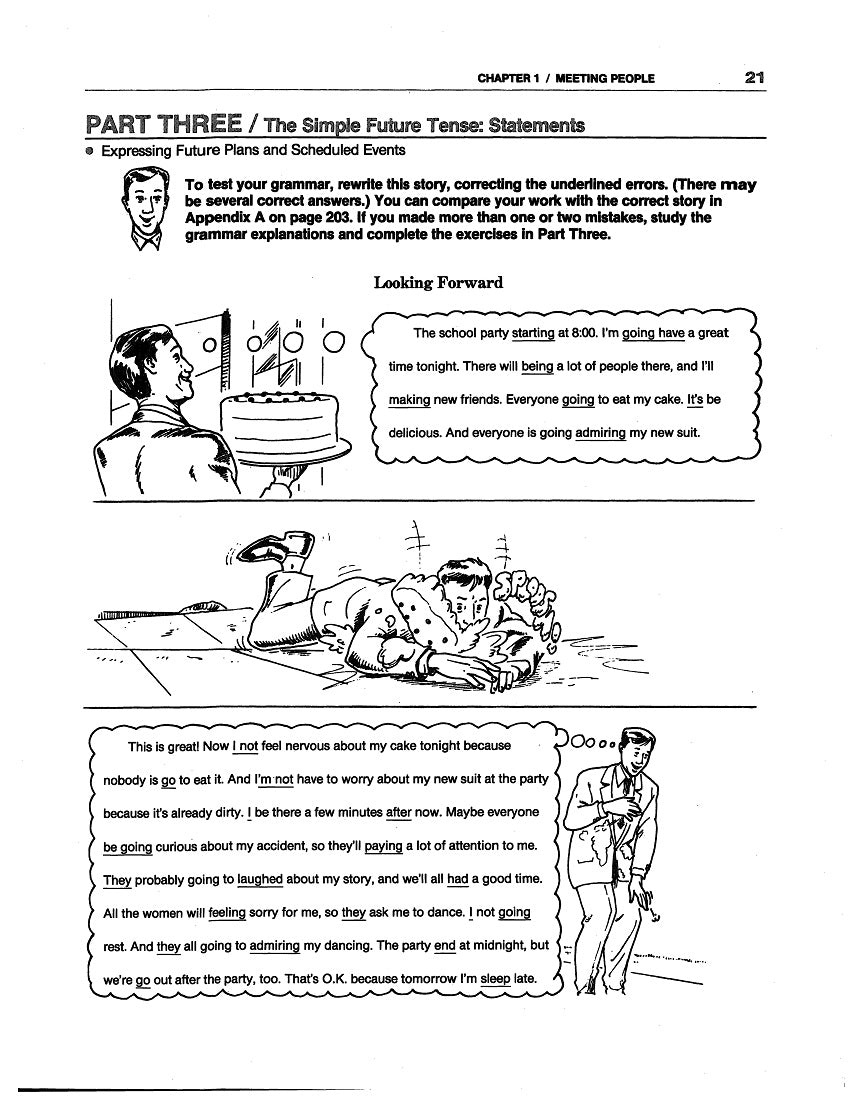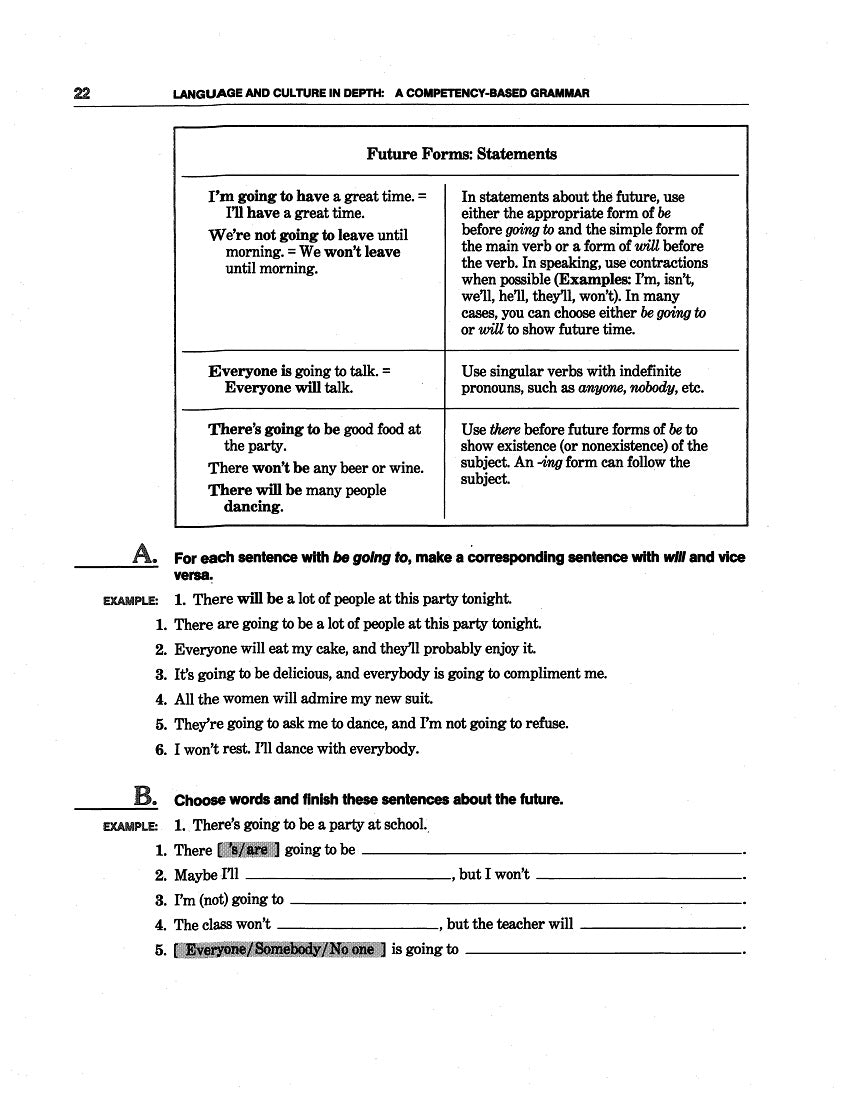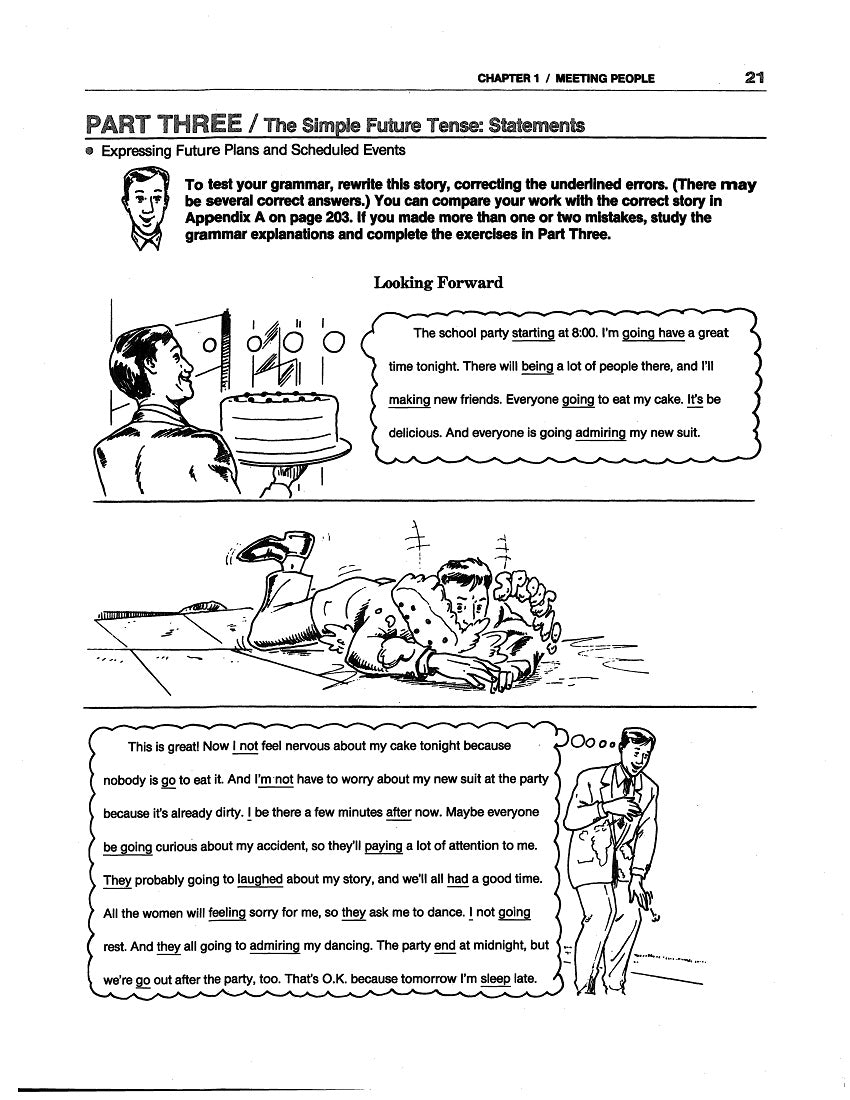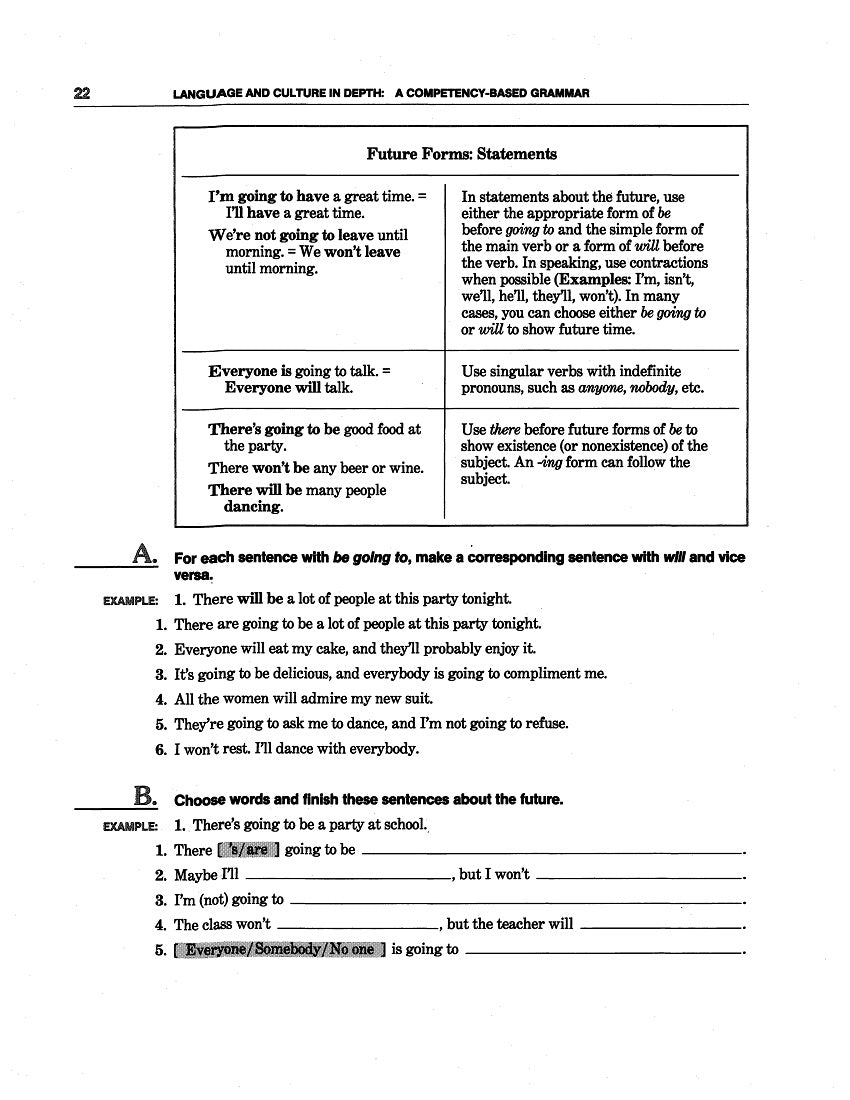1
/
of
2
Work/Life English
D-07.05 Use Simple Future Statements for Plans & Scheduled Events
D-07.05 Use Simple Future Statements for Plans & Scheduled Events
Regular price
$0.00 USD
Regular price
Sale price
$0.00 USD
Unit price
/
per
Part Three of Chapter 1 (“Meeting People”) of WorkLife English Grammar 5: Language & Culture in Depth, pages 21-24
4 pages
Who It’s For: (Self) Teachers & Helpers at (Almost) Advanced Learning Levels
Why It’s Useful: It may help—and it’s usually reassuring—to go over familiar grammar with new material, so here’s a brief summary of Simple Future forms and patterns—with different practice exercises.
What You’ll Do:
[1] To start Part Three: The Simple Future Tense: Statements, first correct the errors in a story called “Looking Forward.” Look through the explanations. Do and check Exercises A, B, C, and F. To make sure you “got the grammar,” try Activities *D and/or *E with someone who can make corrections if necessary.
[2] For review or comparison with other ways to express the future, look back at or forward to lessons that feature modal-verb phrasing (like will / won’t + Base Verb and will / won’t + be + Verbing); present forms with future meaning (for scheduled events, plans, or intentions); verb phrasing that includes infinitives (such as am/is/are + about to + Base Verb—or was/were + going to + Base Verb); and more. These are available in some of the Parts & Pieces numbered D.07—and of course, in other grammar-in-context texts.
Couldn't load pickup availability




